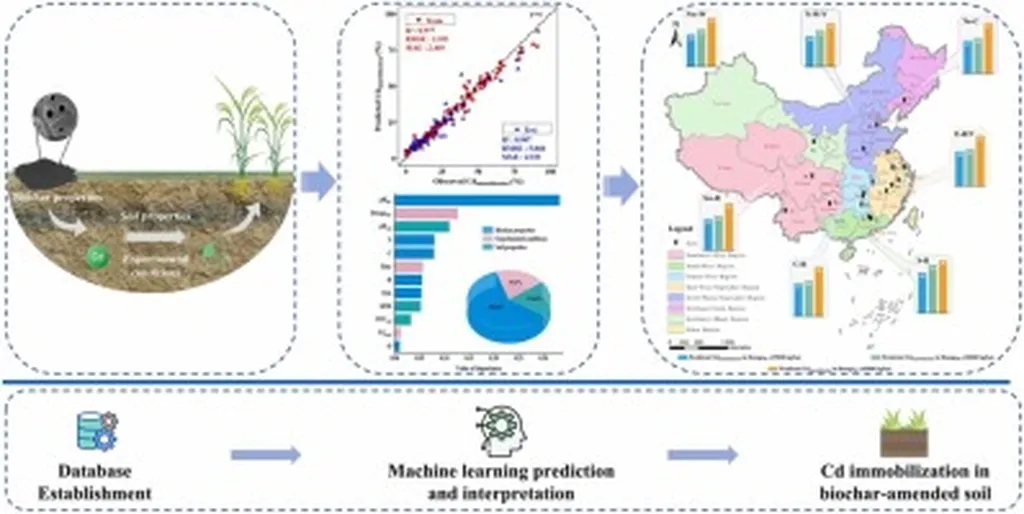In the heart of China, researchers have uncovered a promising strategy to tackle a global environmental challenge: cadmium (Cd(II)) contamination. A study led by Kang Liu from the National Key Laboratory for Development and Utilization of Forest Food Resources at Zhejiang A & F University has revealed that a combination of arbuscular mycorrhizal fungi (AMF) and biochar can significantly enhance the phytoremediation of Cd(II) using Koelreuteria bipinnata, a plant known for its hardiness and adaptability.
Cadmium contamination is a pressing issue, with sources ranging from industrial emissions to agricultural runoff. The search for effective remediation strategies has led scientists to explore the synergistic effects of AMF and biochar. “While individual applications of AMF or biochar have shown potential, their combined effects have remained largely unexplored,” Liu explains. The team’s pot experiment assessed the impact of AMF inoculation and rice-husk biochar amendment on plant growth, soil properties, and Cd(II) uptake under varying soil Cd(II) concentrations.
The results were striking. Individual applications of AMF or biochar each offered distinct advantages. AMF alone boosted photosynthetic capability, biomass yield, and glomalin-related soil protein (GRSP) secretion, while biochar alone promoted phosphorus absorption and decreased soil Cd(II) bioavailability. However, the real breakthrough came with the combined application of two AMF species, Rhizophagus irregularis and Diversispora versiformis, along with biochar. This dual-inoculation strategy achieved a 51% reduction in shoot Cd(II) uptake, a 76% decrease in soil total Cd(II) concentration, and a 74% reduction in DTPA-extractable Cd(II) concentration.
The synergistic effects were driven by enhanced spore density and GRSP secretion, highlighting the potential of this combined approach for Cd(II) phytoremediation. “Our findings demonstrate that combined R. irregularis-D. versiformis inoculation with biochar amendment provides an effective phytoremediation strategy for Cd(II)-contaminated soils using K. bipinnata,” Liu states.
The implications of this research extend beyond environmental remediation. For the energy sector, which often grapples with heavy metal contamination from mining and industrial processes, this strategy offers a promising solution. By enhancing the efficiency of phytoremediation, this approach could reduce cleanup costs and environmental impact, ultimately supporting more sustainable energy production.
Published in the journal *Ecotoxicology and Environmental Safety* (translated as “生态毒理学与环境安全学报”), this study opens new avenues for research and practical application. As the world continues to seek sustainable solutions to environmental challenges, the synergy between AMF and biochar in phytoremediation stands out as a beacon of hope. The research not only advances our understanding of soil remediation but also paves the way for innovative, eco-friendly technologies that could reshape the future of environmental management in the energy sector.

